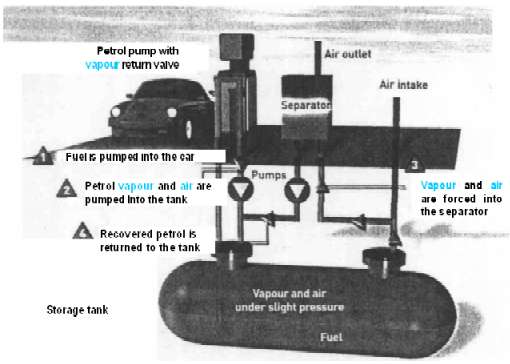
 |
||||
|
Breath of fresh air No more nasty vapours when you top up your tank at petrol stations |
 Now Klaus
Ohlrogge and his colleagues at the government-funded GKSS Research Centre
in Germany have devised a novel way of cutting vapour
leakage to less than 5 per cent. The system works by sucking out 1.5 times
as much air as the volume of fuel being pumped
into the car tank, and pumping this air into
the headspace of the filling station's storage tank.
When the pressure in this tank is higher than the pressure outside, this vapour-laden air is funnelled through a stack of membranes coated with a silicone material that selectively adsorbs hydrocarbons based on their chemical structure. The adsorbed hydrocarbons diffuse through the membrane coating into a porous inner layer, pulled by a concentration gradient, from where they are funnelled back into the station's storage tank. The cleaned air is then vented to the atmosphere. Nine petrol stations in Germany are trying out the system, and one unit is being tested in the US. |
|
|
THE
stench of petrol at filling stations could soon be a thing of the past,
the ACS heard. For every litre of petrol that goes into your tank, about a gram of vapour is released into the air. The hydrocarbons in petrol contribute to ozone and smog, and its aromatic compounds are suspected carcinogens and in high doses can cause leukaemia. An additive called methyl-tert-butyl ether (MTBE) adds a pungent smell to the fumes. "There have been reports of feeling |
unwell after
exposure to MTBE, and it has caused tumours in animal experiments."
says Melinda Henry at the World Health Organization in Geneva. The WHO
doesn't recommend limits for petrol vapour
emissions, but to meet local regulations some filling stations in the
US and Germany have fitted vacuum pumps that suck excess vapour
and air back into the filling station's tank.
However, even the best of these systems still allow a quarter of the vapour
to escape. |
|

|
||